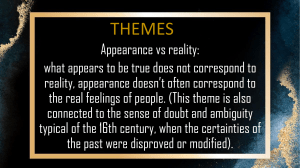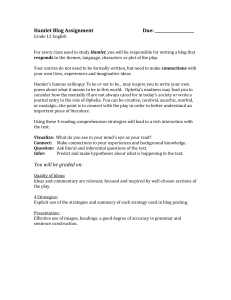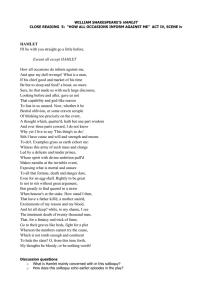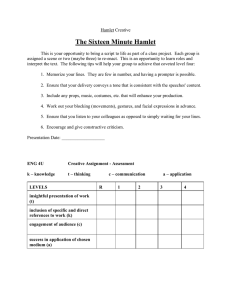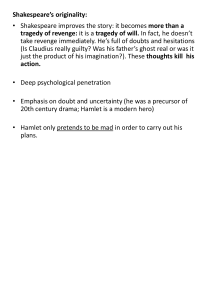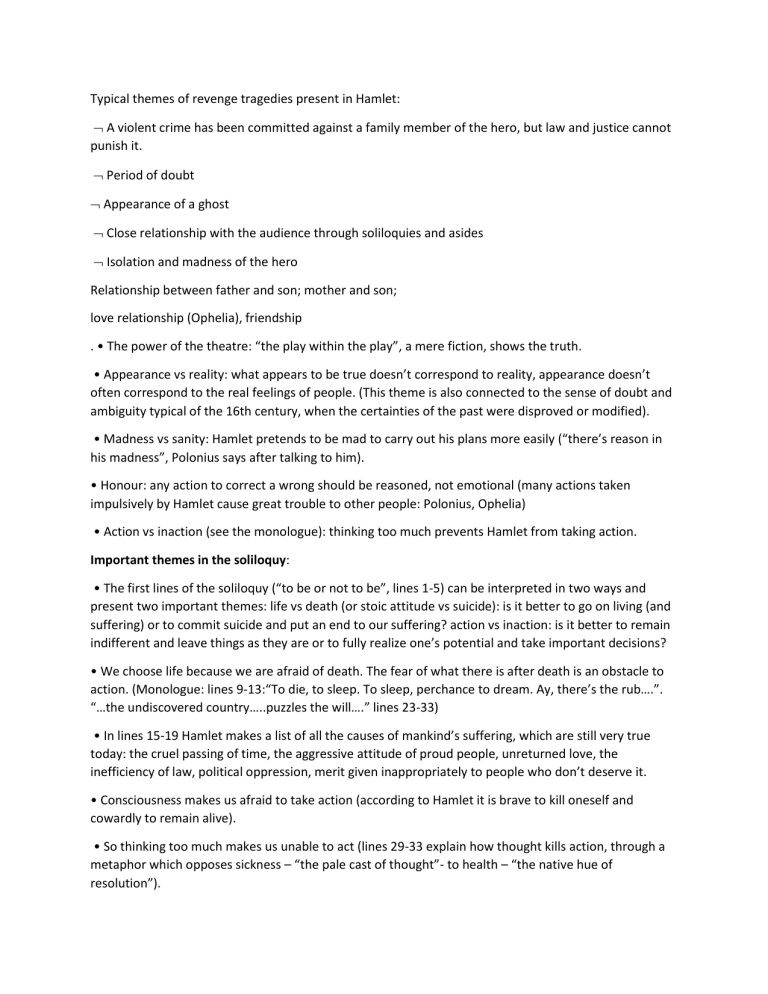
Typical themes of revenge tragedies present in Hamlet: A violent crime has been committed against a family member of the hero, but law and justice cannot punish it. Period of doubt Appearance of a ghost Close relationship with the audience through soliloquies and asides Isolation and madness of the hero Relationship between father and son; mother and son; love relationship (Ophelia), friendship . • The power of the theatre: “the play within the play”, a mere fiction, shows the truth. • Appearance vs reality: what appears to be true doesn’t correspond to reality, appearance doesn’t often correspond to the real feelings of people. (This theme is also connected to the sense of doubt and ambiguity typical of the 16th century, when the certainties of the past were disproved or modified). • Madness vs sanity: Hamlet pretends to be mad to carry out his plans more easily (“there’s reason in his madness”, Polonius says after talking to him). • Honour: any action to correct a wrong should be reasoned, not emotional (many actions taken impulsively by Hamlet cause great trouble to other people: Polonius, Ophelia) • Action vs inaction (see the monologue): thinking too much prevents Hamlet from taking action. Important themes in the soliloquy: • The first lines of the soliloquy (“to be or not to be”, lines 1-5) can be interpreted in two ways and present two important themes: life vs death (or stoic attitude vs suicide): is it better to go on living (and suffering) or to commit suicide and put an end to our suffering? action vs inaction: is it better to remain indifferent and leave things as they are or to fully realize one’s potential and take important decisions? • We choose life because we are afraid of death. The fear of what there is after death is an obstacle to action. (Monologue: lines 9-13:“To die, to sleep. To sleep, perchance to dream. Ay, there’s the rub….”. “…the undiscovered country…..puzzles the will….” lines 23-33) • In lines 15-19 Hamlet makes a list of all the causes of mankind’s suffering, which are still very true today: the cruel passing of time, the aggressive attitude of proud people, unreturned love, the inefficiency of law, political oppression, merit given inappropriately to people who don’t deserve it. • Consciousness makes us afraid to take action (according to Hamlet it is brave to kill oneself and cowardly to remain alive). • So thinking too much makes us unable to act (lines 29-33 explain how thought kills action, through a metaphor which opposes sickness – “the pale cast of thought”- to health – “the native hue of resolution”). • In this soliloquy the personal problem of Hamlet becomes a universal meditation on life and death.
